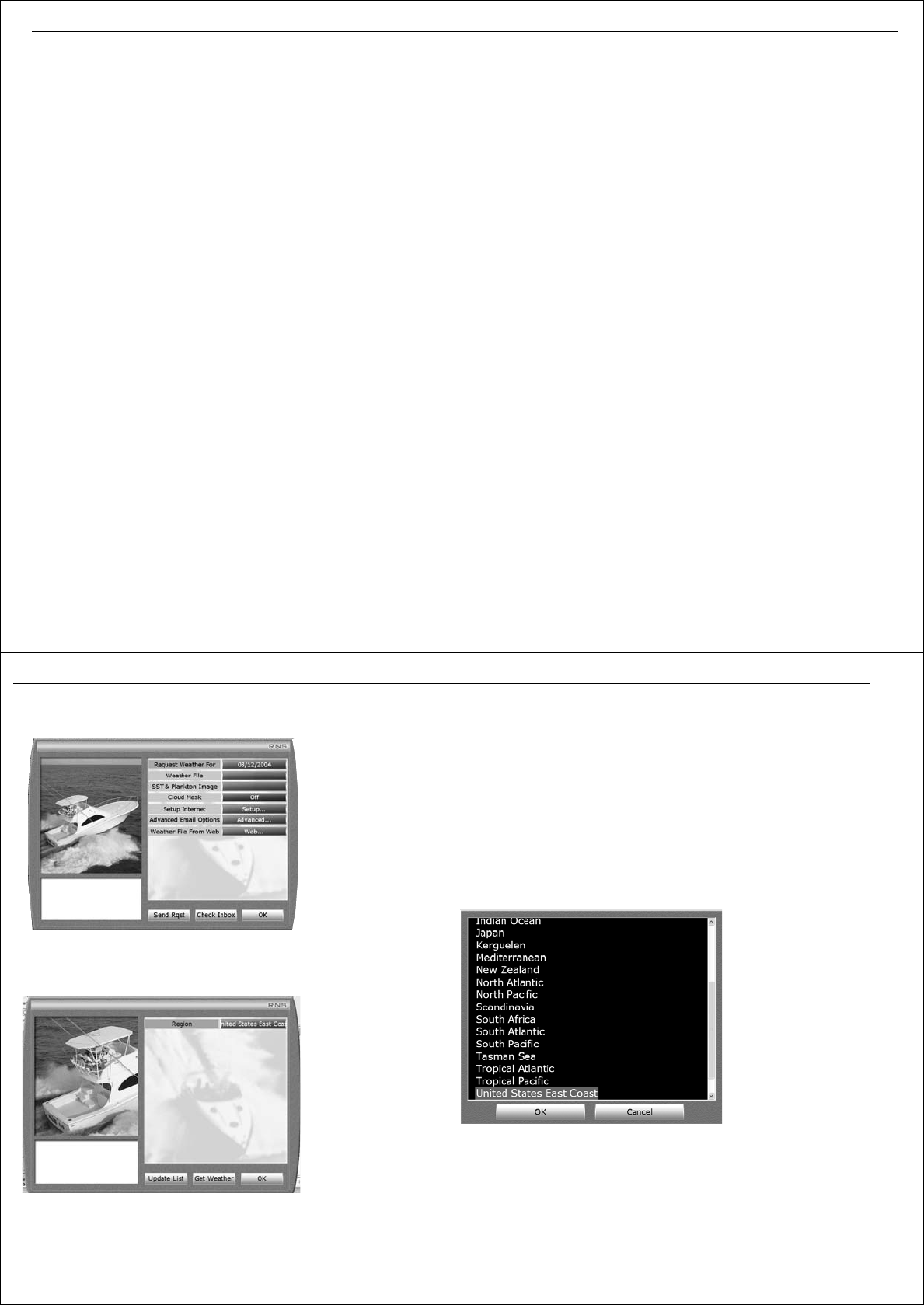
Chapter 13: RayTech advanced features 111
Chapter 13: RayTech advanced features
13.1 Introduction
This chapter introduces and shows you how to use the advanced features
of RayTech and covers:
• Weather information.
• Measuring distances.
• Creating and modifying databoxes.
• Using Polars.
• DataTrak.
• Route Optimization.
• Pre-start display.
• Navigation numbers.
• Fishing features.
• Engine panel.
13.2 Weather information
If the computer on which you are running RayTech is connected to the
internet you are able to download weather files, display and animate these
on-screen - “RayTech Weather screen” on page 110.
You can display information such as:
• Air temperature.
• Clouds.
• Ocean currents.
•Rain.
• Relative humidity
• Sea temperature.
• Surface pressure.
• Swell.
• Swell and wind waves.
•Wind.
•Wind waves.
After you have acquired your weather files, you can fully animate them to
show the predicted weather and ocean currents over a specified period of
time. Typical weather files contain information covering a period of several
days.
The screen
Once you have downloaded a weather file it can be overlaid on your chart
in several layers.You can choose what information is displayed and the
format it is shown in. For example, ocean currents can be shown as barbs,
arrows, scaled or contours.
To set up your weather display:
1. Select File/Layers. The RayTech layers dialog box is displayed.
2. Click the
Weather Layers
icon. The weather layers dialog box is
displayed.
3. Click the action box next to the information you require to set the
format in which it is shown.
4. Click
OK
until the dialog box closes.
112 RayTech RNS V6.0 - Users Guide
Figure 13-1: Internet weather dialog box
Figure 13-2: Select region dialog box
Getting weather information from the internet
To get weather information from the internet:
With an internet connection:
1. Select File/Get Weather from Internet. The Internet dialog box is
displayed. See
Figure 13-1
.
2. Click the
Weather File from Web
action box. The region dialog box is
displayed. See
Figure 13-2
.
3. Click the
Region
action box. The region list is displayed.
4. Scroll down and highlight the required region.
5. Click
OK
. The region list closes.
6. In the region dialog box, click
Get Weather
. The download information
box is displayed.
D7022_1
D8827_1
D8828_1
